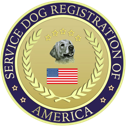Dog Allergies – Treatments at Home and at the Vet
2019-07-03In an earlier post, we discussed some of the most common allergy symptoms in dogs. Like
humans, dogs can suffer from food allergies, as well as seasonal and environmental allergies.
Unfortunately, allergies themselves can’t usually be cured and it can be a long and frustrating
process even figuring out what your little friend is allergic to in the first place. There are many
treatments, both in home and from the vet, that can relieve your pet of the worst symptoms.
This is important not just for your dog’s comfort, but his overall wellbeing. Allergies that go
untreated can lead to infections that require more serious intervention.
The easiest first step to fighting allergy symptoms is simply keeping your dog clean. Sure, we
know you’re already a good owner that takes your friend’s hygiene seriously. But cleaning to
reduce allergy symptoms is another beast altogether. One easy first step is to use pet wipes.
These special wipes remove things like pollen and are great to administer after walks or playing
outside. Hypoallergenic shampoo is another product worth investing in. These anti-itch
shampoos can be bought over the counter and contain all-natural ingredients meant to sooth
itchy skin. Don’t worry, they are usually comparable in price to regular good quality shampoos.
The next step up in home-treatment involves stronger, but still not so invasive remedies. Many
people swear by supplements like biotin and omega-3s. These pills help keep a dog’s skin and
coat healthy and generally reduce the dry itchiness associated with many allergies. Sulfodene is
a product used to reduce discomfort from irritation and hot spots. Simply applying it to the
effected skin can reduce discomfort. This is especially important for hot spots, because the
more uncomfortable a dog gets, the more he’ll scratch, ultimately making the problem much
worse. Sulfodene may sound like a dangerous chemical, but it’s FDA approved and considered a
healthy, common way to combat allergies. There are also many kinds of medicated sprays that
include antiseptics and natural ingredients like aloe. These sprays help reduce the chances of
irritations turning into infections.
If you’ve done all this and you’re still at your wits end about how to solve the problem, it may
be time to get out the medication. If you’ve ever had a bad case of allergies, there’s a chance
you have found relief with antihistamines. The good news is that dogs can take these too! Of
course, you absolutely have to consult your veterinarian to determine which antihistamine, and
at what dose, is right. But once you have figured it out, it can be as easy as simply buying the
medicine over the counter and slipping it your dog’s food or favorite treat. It’s not something
you will want to do every day, but on especially bad days it can be a lifesaver.
Finally, when all else fails, you can resort to allergy shots. This is a much more involved process,
as it will mean taking your dog to the vet (maybe even a specialist) to get tested for allergies.
This is done the same way in dogs as in humans – with a simple skin prick test. Once your dog’s
specific allergy has been identified, the little guy can be set up on a regular immunotherapy
regimen. Immunotherapy is a real time and money commitment, but for some dogs it might be
the best choice. No matter what your dog is allergic to or how serious it is, it’s important to pay
attention to the symptoms and communicate with your vet at all times.
